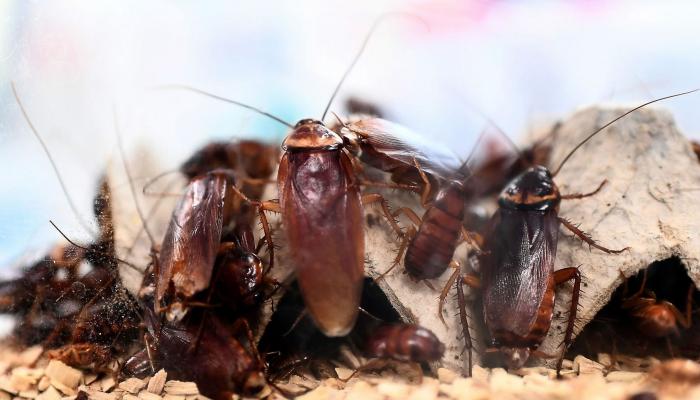
There are four species of cockroaches in India that can become pests: German cockroach, brown banded cockroach, oriental cockroach and American cockroach. Cockroaches are known to carry diseases like dysentery, typhoid and poliomyelitis, as well as gastroenteritis.
Cockroaches may become pests in homes, schools, restaurants, hospitals, warehouses, offices, and virtually in any structure that has food preparation or storage areas. They contaminate food and eating utensils, destroy fabric and paper products, and impart stains and unpleasant odors to surfaces they contact.
Being flat, cockroaches are able to utilize narrow cracks and crevices as harborages. They will remain hidden in these during the day, coming out in darkness to feed. This nocturnal habit means that, except in heavy infestations they will not usually be apparent during the hours of daylight. Most species move quickly and climb with ease.
Cockroach control is not a simple matter. Their habits and their small size mean that there can be a very widespread infestation that is not recognized early on. Nymphs can be very small, and as cockroaches are omnivorous they will often eat other dead cockroaches and moultings, so masking the evidence of infestation.
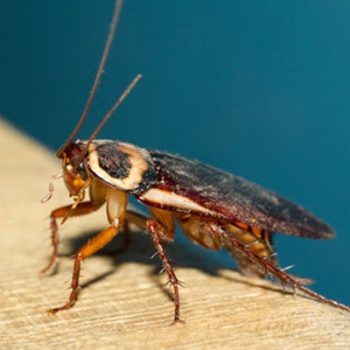
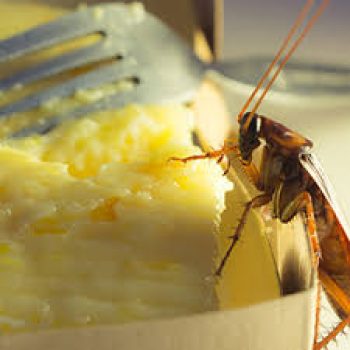
Ultrasonic bat repellent devices are very effective against bats. These run almost completely silent to humans, emitting ultrasonic frequencies that interfere with bat’s echolocation navigation. Bats are not harmed, this just annoys them & encourages them to seek out quieter locations.
Netting is long-lasting & extremely effective in bat control, & is widely used around the world. We offer several types of exclusion netting – simply install across openings or to protect large areas from bat infestation. Depending on the kind of bats you are repelling, select a size that is small enough to exclude bats, since bats can wiggle through large-holed netting just like mice can. The most popular netting we sell for bat prevention is our PE-Plus Premium Grade Bird Net, because it is very well constructed to protect against the elements, is tightly-knit, & protects against tearing or picking by pests
American Cockroaches
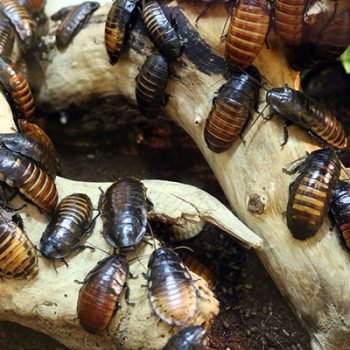
The American cockroach is the largest of the house-infesting cockroaches. American cockroaches enter home to find water or food. They can easily pass under doors if the weather stripping is damaged. Basement windows and garages are also common entryways. When American cockroaches enter homes, they often go to bathrooms, kitchens, laundry rooms and basements.
Cockroaches are filthy pests. They can spread disease, contaminate our food and cause allergies and even asthma. Cockroaches can pick up germs on their legs and bodies as they crawl through decaying matter or sewage and then transfer these germs to food or onto food surfaces. According to the World Health Organization (WHO), they are proven or suspected carriers of the organisms causing diarrhea, dysentery, cholera, leprosy, plague, typhoid fever and viral diseases such as poliomyelitis.
Brown banded Cockroaches
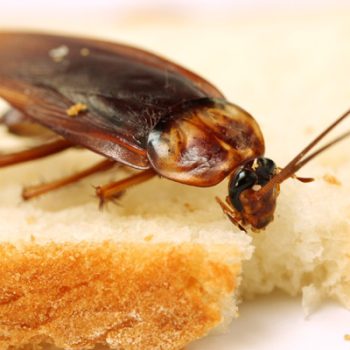
German Cockroaches
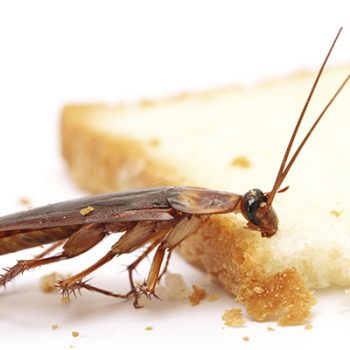
German cockroaches are one of the most common cockroach species found in households. German cockroaches undergo three distinct life phases: egg, nymph and adult. Their entire life cycle spans approximately 100 days, although this is dependent on factors such as temperature, diet and injuries.
German cockroaches breed continually. In a lifetime, a female cockroach is capable of producing almost 400 eggs. Populations grow quickly in optimal conditions. A typical thriving population is comprised of 75 percent nymphs and 25 percent adult roaches.
German cockroaches begin life as eggs within an egg casing known as an ootheca. The oothecae contain approximately 35 eggs and are brown in color. Oothecae are approximately 7 mm long and 2 mm wide. They are very resilient and can survive harsh conditions.
Female German cockroaches carry the oothecae attached to their abdomens until about two days prior to hatching and then deposit them in a protected location. Oothecae may be seen protruding from the abdomens of German cockroach females. Nymphs emerge from the oothecae as tiny insects. They gradually darken into dark brown or black cockroaches with parallel lines visible upon the pronotum. German cockroach nymphs are wingless and incapable of reproduction. Nymphs molt six to seven times and can develop completely within 100 days under optimal conditions.
The adult stage begins with the last successful molting. At this point, German cockroaches are approximately 15 mm in length and are winged. Adult German cockroaches are nocturnal insects that hide during the day and scavenge at night. Despite their fully developed wings, German cockroaches very rarely fly.
The German cockroach is the most common species of the cockroach. German cockroaches can breed at a rate of up to six generations per year. The German cockroach can fit through an opening as small as 3/8 inch in width.
Oriental Cockroaches
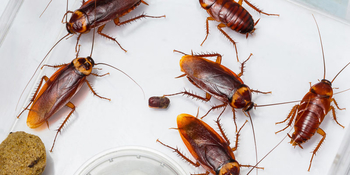
Oriental cockroaches are believed to be of North African origin, despite their name. Oriental roaches are sometimes called “water bugs” because they come out of drains, and “black beetle cockroaches” because of their smooth, dark bodies. They are known for their strong, unpleasant, “roachy” odor.
